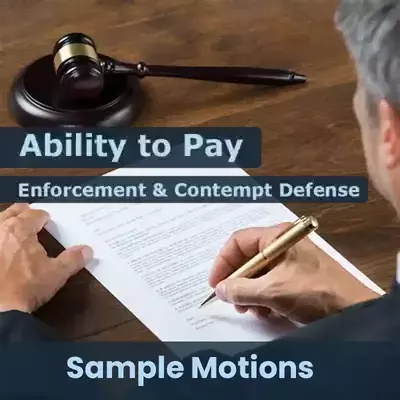Texas Civil Practices and Remedies Code
Title 5. Government Liability
Chapter 110. Religious Freedom
TRFRA Section 110.007 One-Year Limitations Period
Analysis:
This short section of Chapter 110 is very important for anybody seeking relief under the code. You cannot delay. You cannot wait around and say “I will do it tomorrow or next week.” That may be too long. This chapter can provide you a way to cost the state for the judge’s violation of yours and your child’s religious rights. The state put a time limit on this relief. You have one year from the date of the infringement to use it or lose it.
Don’t be the one who wakes up to realize you could have been paid $10,000 and your attorney could have gotten paid by the state to get your kids back for you but you lost out because you waited too long. How are you going to feel if you let this once-in-a-lifetime opportunity pass you by?
The time limit starts running from the date you knew or should have known of the substantial burden on your religious freedom. This is a bit fuzzy or vague so you don’t want to play around with it and wait till the last day, last week, or even last month. The state will do everything it can to avoid paying you and to avoid giving your children back to you. You have to do your part by acting immediately.
You can lock in or vest your right to recover under this chapter by doing two things.[1] You first need to file the proper notice in the proper way, see Section 110.006. If you do it wrong you may lose your opportunity to get paid. But there is more to it.
You need to be ready to file your petition within fifteen (15) days of serving the letter. The second part of this statute tolls the limitations period based on the serving of the letter. The problem with the way this statute is written is that it can either hurt you or help you depending on how the courts interpret it.
If you are in the eleventh or twelfth month after learning of the substantial burden then this sub-section extends the limitations period to include the sixty-day notice period plus fifteen days. This is good for you if the limitations period is close to expiring and you still need to serve the letter. However, if you are early in the limitations period, it may work the other way.
Depending on how this sub-section is interpreted, it could be read to say that once you file your notice, you must file a petition within the fifteen days following the sixty-day’s notice period. There is no case law yet, that we know of, which tells us which way the courts will go on this question. What we suggest (but do not advise as we are not attorneys and are not allowed to “advise”) is that you be prepared to file your petition within fifteen days of filing your notice.
We help you with both of these documents by providing examples. We educate you on applying the requirements and rules to family law cases. If you hire an attorney we can actually, working through your attorney, prepare these documents for your attorney. Remember, if you win this case, you can get your attorney’s fees paid by the state. This is a case where hiring an attorney is almost a no-brainer. You get the benefit of our extreme focus on these issues and our personal experience filing them plus you get the benefit of an attorney’s legal training and experience in doing the more routine legal technical aspects of the legal suit.
Please do not jump into this and just start filing things without a clear strategy. We want you to be successful. We want the state of Texas to have to make such a big payout in these cases that it changes our family law codes to protect all of our rights but you have to do this properly to win. Please take a strategic approach that considers all the potential mistakes and avoids them.
Subsequent posts on this topic will continue to explain the power of this code and how it applies to parents in SAPCR proceedings. You will also find that we have created a package of training and assistance with using this code you can use as an example for family law cases.
Soon you will learn that using this code you can get your attorney’s fees and costs paid for by the state of Texas. You can even get compensatory damages for the harm the court did to you and your child up to a maximum of $10,000. So, keep reading and when you have completed the free materials, inquire about the Texas Religious Freedom Package that provides tools and shortcuts that you and your attorney can use to win your equal rights to your children back.
Subsequent posts on this topic will continue to explain the power of this statute and how it applies to parents in SAPCR proceedings. You will also find that we have created a package of training and assistance with education with how we might have used this statute in our case. Keep reading and soon you will learn that using this statute you may get your attorney’s fees and costs paid for by the state of Texas. You may even get compensatory damages for the harm the court did to you and your child up to a maximum of $10,000. So, keep reading and when you have completed the free materials, inquire about the FFC Texas Religious Freedom Restoration Act (TRFRA) Package that provides tools and shortcuts that you and your attorney can use to win your equal rights to your children back and to avoid costly mistakes that could prevent you from receiving the protection of this statute.
TRFRA Section 110.001 Definitions:
TRFRA Section 110.002 Application:
TRFRA Section 110.003 Religious Freedom Protected:
TRFRA Section 110.004 Defense:
TRFRA Section 110.005 Remedies:
TRFRA Section 110.006 Notice; Right to Accommodate:
TRFRA Section 110.007 One-Year Limitations Period:
TRFRA Section 110.008 Sovereign Immunity Waived:
Below is the full text of Section 110.007 of the Texas Civil Practices & Remedies Code
Texas Civil Practices and Remedies Code
Title 5. Government Liability
Chapter 110. Religious Freedom
Sec. 110.007. One-Year Limitations Period.
(a) A person must bring an action to assert a claim for damages under this chapter not later than one year after the date the person knew or should have known of the substantial burden on the person’s free exercise of religion.
(b) Mailing notice under Section 110.006 tolls the limitations period established under this section until the 75th day after the date on which the notice was mailed.
Added by Acts 1999, 76th Leg., ch. 399, Sec. 1, eff. Aug. 30, 1999.
* The authors of this post are NOT attorneys, we do not practice law, and cannot give you legal advice. What we offer is education on the laws and how they affect you and your children. We help you become better consumers of legal services from attorneys and we help you get better outcomes from the legal system by increasing your knowledge and understanding of how the system works for and against you and your constitutional rights. Make sure you check with an attorney for the legal technical procedures and how you might apply this to your case. We are not responsible for your results or consequences in your suit or dispute for anything you use from this site, packages, videos, or any other information that you get from us.
[1] This is not legal advice. It is education on what Texas courts have decided in other cases where the legislature has given something and then taken it back. The courts could always treat this situation differently. Confer with your attorney for specific legal advice.



























